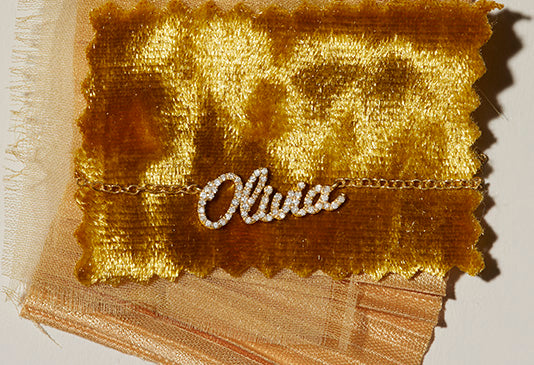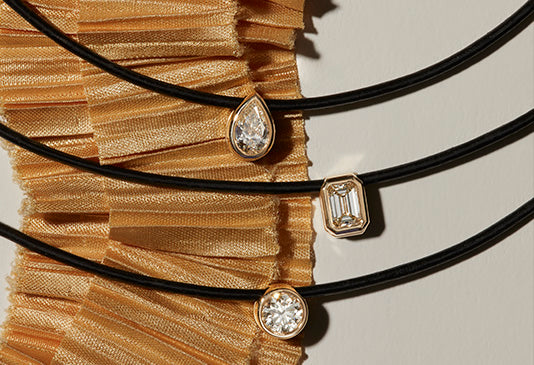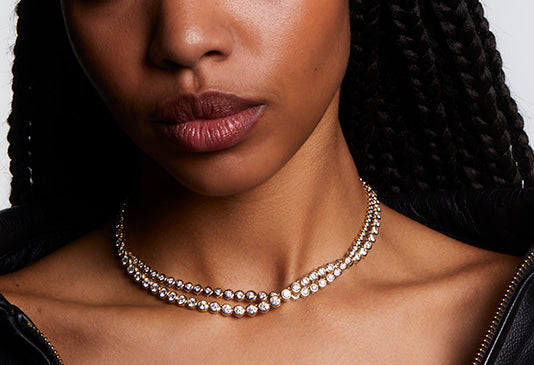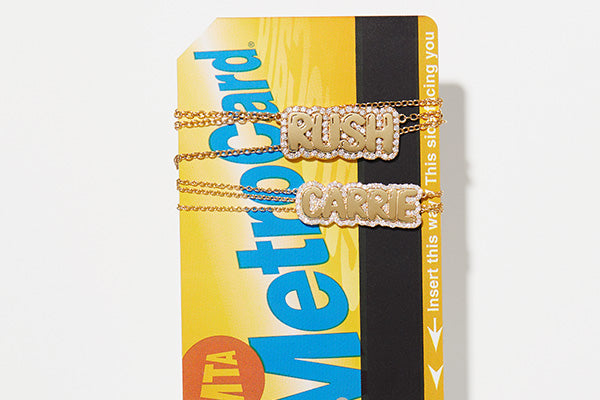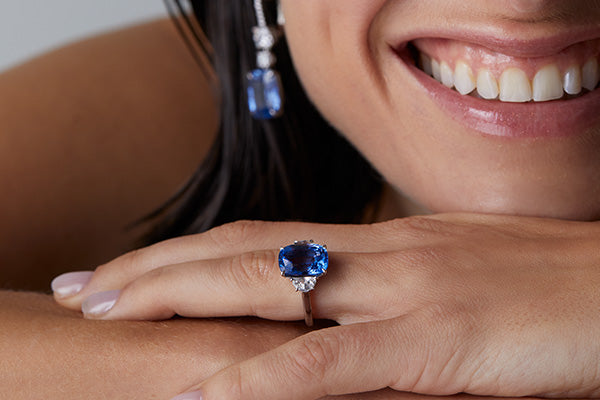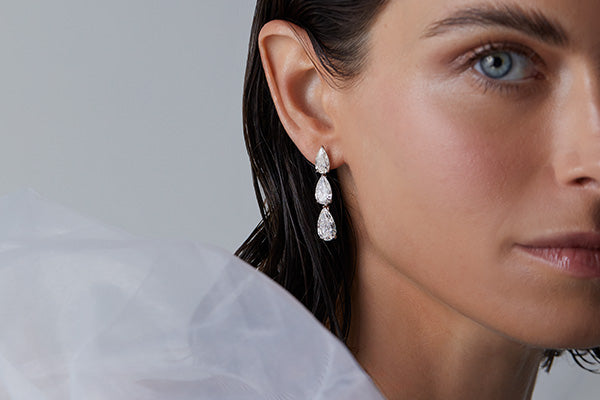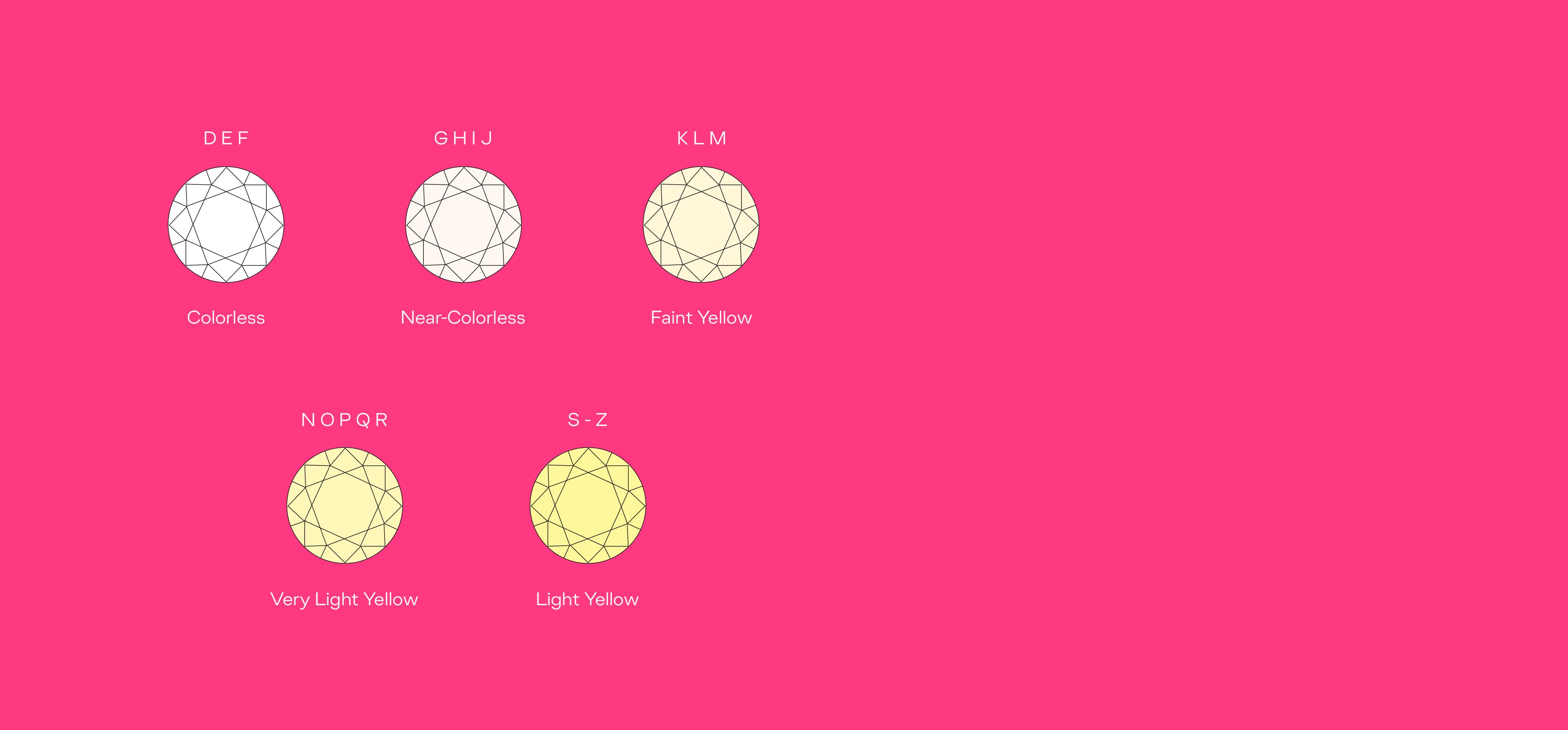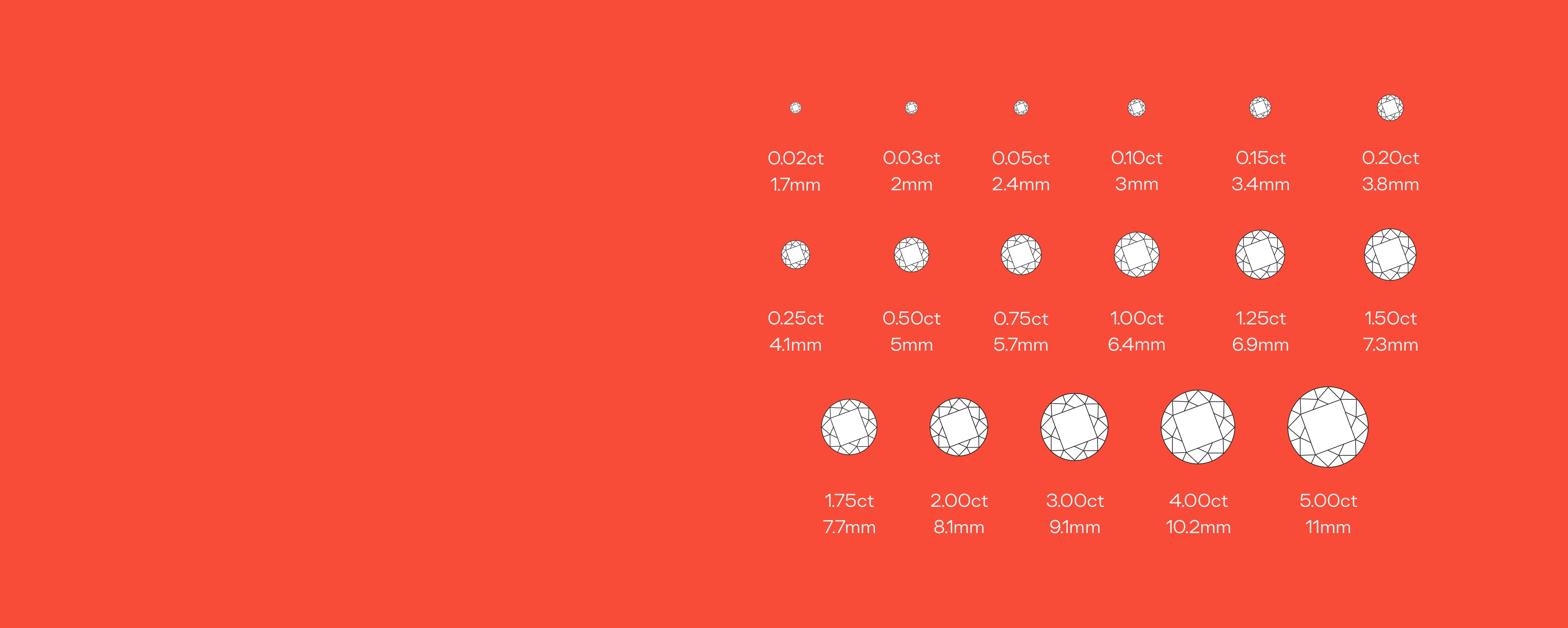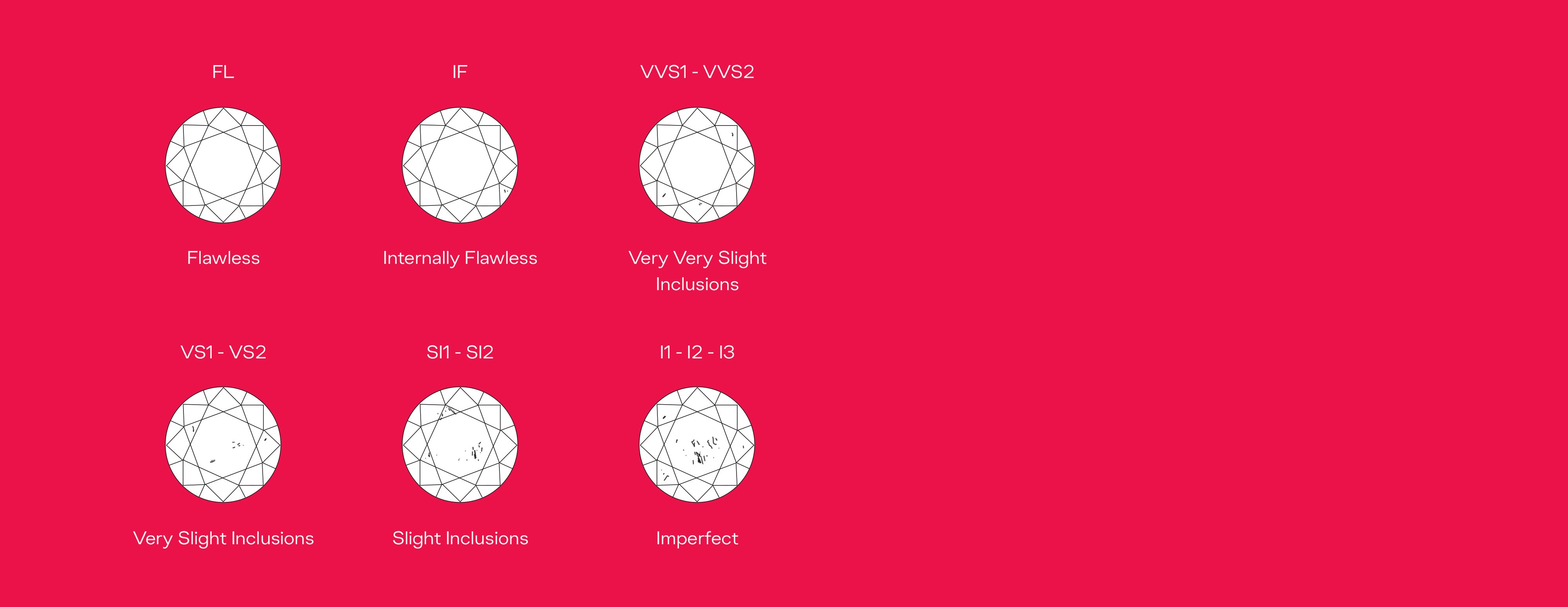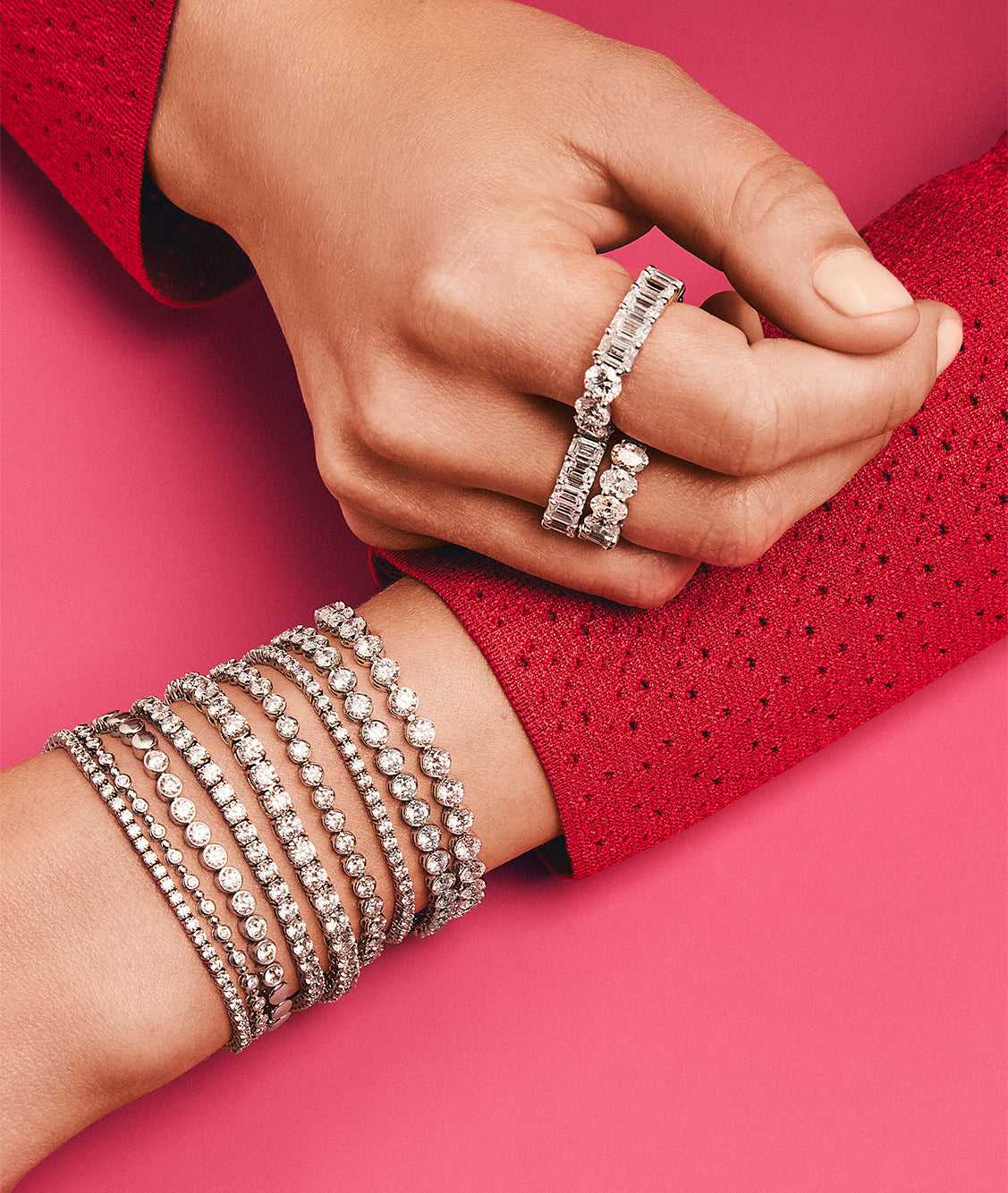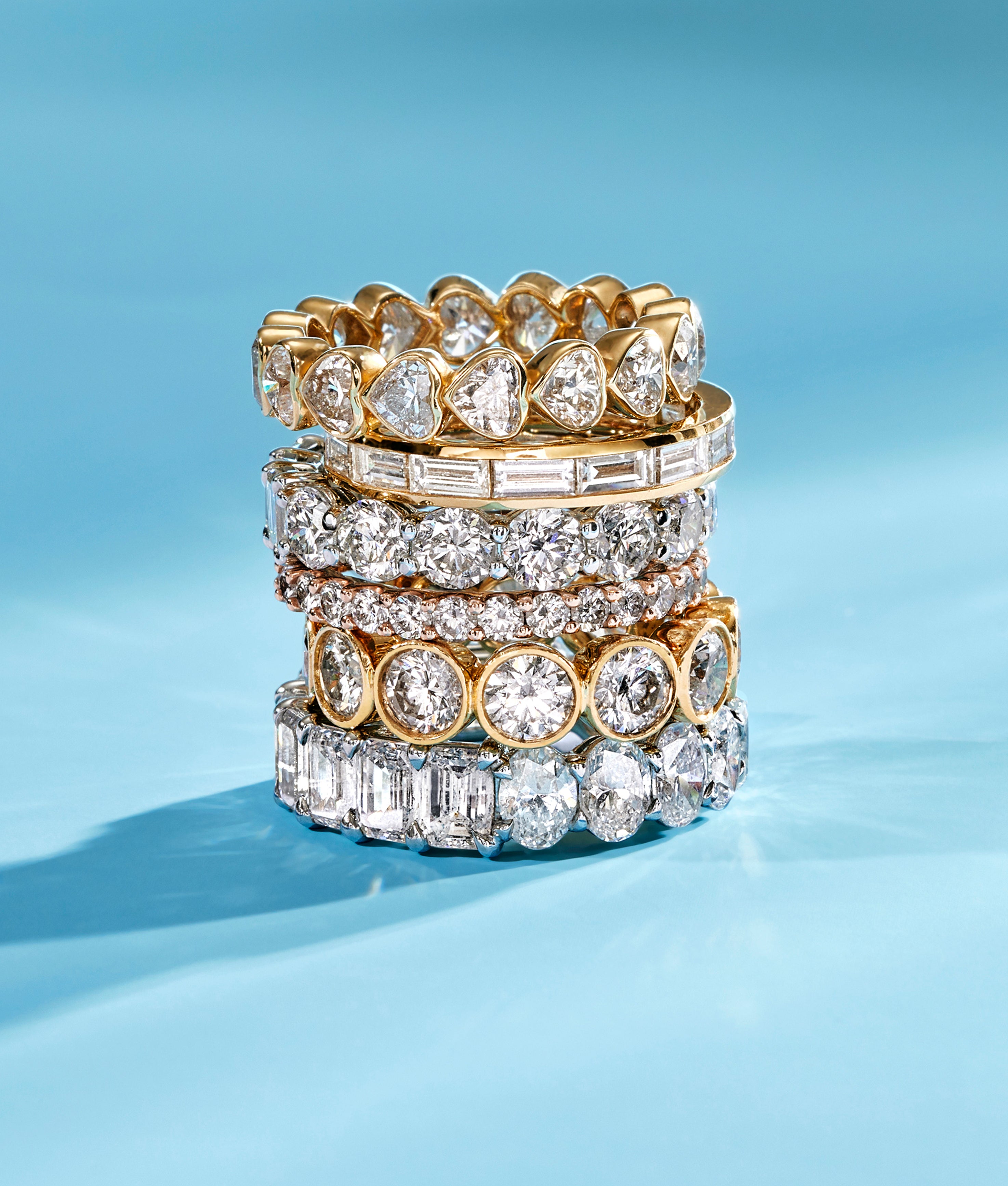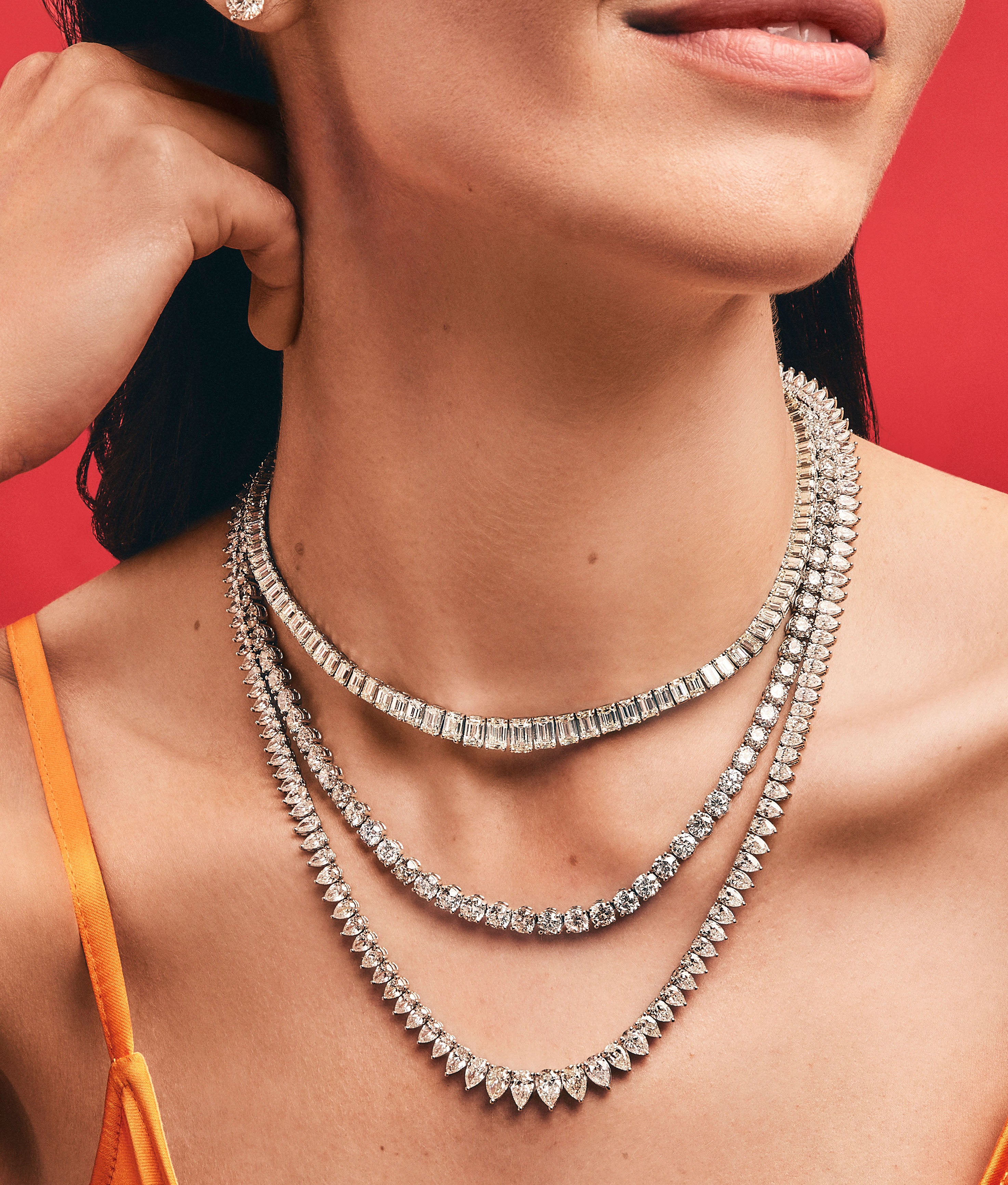CUT
Cut is the most objective and scientific measurement of a diamond’s proportions, arrangement and alignment of the facets, and quality of the polish. In an ideally cut stone, the light entering the diamond reflects and refracts creating the fire, brilliance, and scintillation (“sparkle”) in the stone. The Cut is a result of the artistry and craftsmanship of the diamond cutter, to maximize the return of light.
Color
Color is generally considered the second most important attribute when selecting a diamond. This is because it’s usually the most noticeable characteristic, aside from size. A diamond’s color grade refers to the presence or lack of “tint” in the diamond. In a white diamond, this would be a presence or lack of yellow.
The Gemological Institute of America (GIA) grades diamond color on a scale from D to Z. While most diamonds appear to have no color to the untrained eye, most stones usually contain slight tones of yellow. The rule of thumb is that you need to jump two color grades to see a noticeable difference in color.
Carat
The Carat is a measurement of how much a diamond weighs. Each Carat is divided into 100 “points”. For example a half-Carat stone is considered a “50 point diamond”. All else being equal, diamond price increases with Carat weight because larger diamonds are more rare, and thus harder to source.
When looking for a diamond, Carat should be used as a guideline but not the determining factor in your selection. Carat is not necessarily the best indication of how large a stone will appear, rather the measurements of the diamond are a more important reflection of “size”.
Clarity
A diamond’s Clarity grade is based on the number, size, and location of the imperfections that naturally occur in a diamond. Most imperfections tend to be microscopic and generally do not affect the overall beauty of a stone. These inclusions are natural identifying marks that occur during the diamond formation process. Clarity is graded on a scale ranging from Flawless to Included, and the visibility of the imperfections are graded under 10x magnification.
When selecting a diamond, the buyer will determine if he/she is comfortable with the imperfections in a particular stone, since every diamond will have a different occurrence of imperfections. It is best to assess clarity with the naked eye first, before looping the stone to evaluate the imperfections under magnification. Once a diamond is purchased and set into a piece of jewelry, it is rarely viewed under magnification, so we encourage our clients to make a purchase based on the “naked eye” view.

